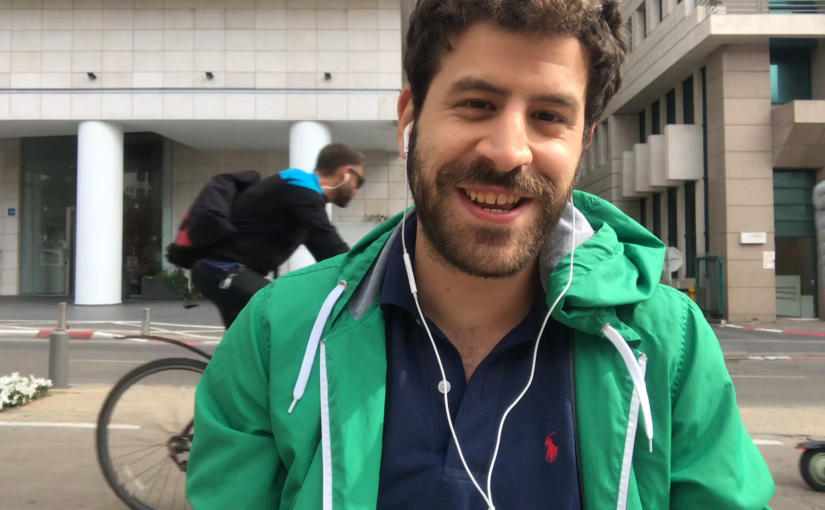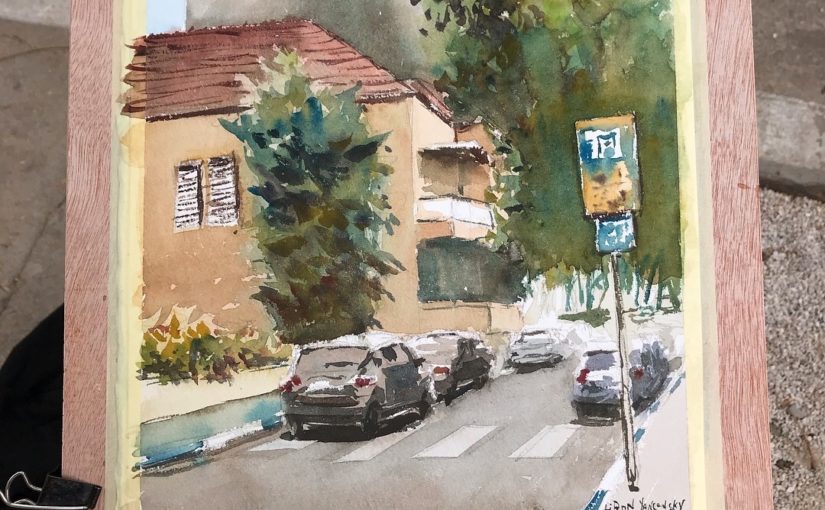Podcast: Play in new window | Download
Hi there!
In this episode I want to talk to you about filming art videos outside, and the challenges that accompany that.
I Love Painting and Sketching Outside
I really love creating outside. Seeing the scene in front of you, hearing the sounds, seeing the people. It’s just such a superior experience.
Plus, you get to translate the scene from a three-dimensional manifestation onto a two-dimensional paper.
This is an extremely important experience that you don’t get painting from photos.
Filming Art Videos Outside
So that brings me to art videos.
On the one hand, I really enjoy filming outside. It has a freshness to it.
Also, I have a funny feeling that this has something to do with my more advanced work. With things I want to do when I’m at the height of my career.
I want to show my work and everything I’m doing.
I don’t know if this is a bug I caught from figures like Gary Vee, or something that’s inherently mine.
But I do know it’s there.
But It’s a HUGE Challenge for me, at Times
Filming outside is challenging for me.
I think I can divide this challenge into two elements.
- Fear that filming will hurt my artistic results. This is a legitimate fear, but I believe that’s something you learn to deal with. When you are so used to recording everything you do, the camera becomes “invisible” to you.
- Fear of filming in public, in front of other people. One of the scariest (and funniest) moments are when I’m just about to talk, and there are many people around my. I know I’m going to surprise them =P
So this led to some challenges. On the one hand I KNEW I have to do this.
On the other, this is scary!
My Decision
I decided to film myself arting outside once a week.
And here’s the thing that will soften it. I don’t rely on that footage at all. I record my three weekly videos normally. And IF what I recorded outside is good, I’ll add it to the schedule.
This really reduces a lot of the pressure (:
You see, I have a tendency to strive for perfectionism at times. So in my head, “the painting process must be perfect”. But if I know that my sole purpose is to record, and whatever happens with it doesn’t matter – this takes off a lot of the pressure.
Artist Corner
In this episode I talked about Carol Evans.
Carol is a watercolor painter, and I think it’s best to let her art speak for itself.
She does crazy beautiful, semi-photo-realistic paintings. You can check out her artwork here:
http://www.carolevans.com/open-editions/
She also has this webpage on her website, showing an actual painting process in stages:
http://www.carolevans.com/original-painting-in-progress/tlvt3k6804rofopi3fsjonqomv4buf
Also, here’s an interview of her:
And this is most of what I talk about in this episode. I hope you enjoyed it!
Here’s where you can find me (:
You can support me on Patreon
Check out my YouTube Channel – Liron Yanconsky
Or ask me questions on Instagram – @LironYanIL or Snapchat – @LironYan3







